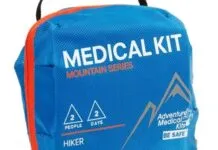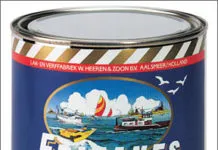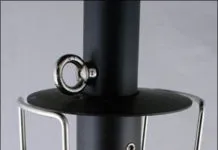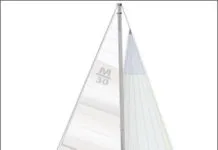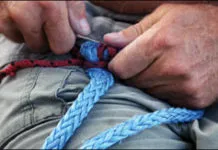Union 36 Boat Review
While not the best boat for light-air sailing, the Union 36 is a good sailboat for the bluewater cruiser. It wont get you there fast, but it will get you there comfortably and in one piece. The boats teak decks and lavish use of interior wood is attractive but requires much upkeep and maintenance. A product of the Taiwan-U.S. boatbuilding industry, the Union 36 is a heavy-displacement, full-keel, cutter-rigged double-ender designed for ocean sailing. The Union 36 is nearly identical to several other boats built during the same period: the Hans Christian 36, Mariner Polaris 36, and the EO36. According to well-known naval architect Bob Perry, the Union 36 and its cousins are all based on the design of a 34-footer that Perry was commissioned to create back in the early 70s.
Mailport: February 2010
The February 2010 issue of Practical Sailor has letters on the following topics: requests for more used boat reviews, foggy electronics, hard varnishes, propane fridges and Iphone apps.
Legacy of Colin Archer is Still Alive and Kicking
If you think your boat is a bear to maintain, you might take some consolation in this months used-boat review of the Union 36. It is a fiberglass boat, but considering the amount of teak on deck and belowdecks, it might as well be made of wood. Not that there is anything very wrong with that. The 32-footer my wife Theresa and I cruised on for 11 years was very similar-a big, heavy double-ender-and ours was made of wood. While our 1937 William Atkin Thistle design differed significantly from the Union 36 and the modern double-enders that Bob Perry would later unveil (the Tayana 37 and Valiant 40, among the better known), these boats can be broadly traced to a common ancestor: the North Sea rescue boats designed by the renowned Norwegian naval architect Colin Archer.
The Lightweight, Carbon-Fiber Wing Dinghy is a Classy, Rowable Sailing Dinghy
The lines on the carbon-fiber Wing Dinghy date back to Nat Herreshoffs Frost Fish, a dinghy with a reputation for performance under sail and when being rowed. Diana Russells Wing Dinghy hull weighs only 55 pounds. Built by Savage River Works using conventional fiberglass FRP skin, carbon outer skin, and Kevlar inner hull skin, the 9-foot dinghy tests well against the popular Bruce Bingham-designed Trinka 10. The Wing Dinghy also scored well in the sailing, hoisting, towing, and rowing tests.
PS Advisor: The Curse of the Pox
Boat maintenance master Don Casey, on the BoatUS website (www.boatus.com), suggests cleaning the surface using a mild abrasive like Bar Keeper’s Friend (www.barkeepersfriend.com) and fine bronze wool, and then sealing the surface with a wax. Sparmaker Seldén Mast recommends applying Woody Wax (www.woody-wax.com) using bronze wool to seal the surface and remove the pox. Casey cautions against using a polish on aluminum as some are so abrasive they will peel away the anodizing. We’ve had success with Mothers (www.mothers.com) and Prism Polish (www.mppros.com), but we do not recommend using the Mothers with the Powerball on aluminum. Be sure to read the label on any polish before using it; some advise against use on anodized aluminum.
Five Rides that Push the Limits of High-performance Sailing
After sifting through the field of sailing sports cars on the market today, Practical Sailor identified five very different watercraft that met our speedster criteria. At the top end of our size and cost profile is yacht designer Bill Lees legacy, the Santa Cruz 37, a wolf in wolfs clothing that offers performance as priority one, two, and three. Next in line is the Andrews 28, a breakaway racer/cruiser that packs performance and a Spartan minimalists cruising package into a 25.7-foot waterline. Hard to miss is the Open 6.50, an out-an-out go-fast sportboat with room below for little more than a cooler and bevy of high-tech sails. For the diehard dinghy sailor, we highlight the quick-planing Stealth, a 14.5-footer that redefines reaching, and in true giant-slayer fashion, can fly by most 40-footers on a power reach. And if thats not action enough, we hop aboard a turbo-charged windsurfer, the Starboard Futura. Powered with a Neil Pryde sail, it runs away with the award for most speed and fun for our dollar.
DIY Topside Paint Test: Two-part Linear Polyurethanes Face Off
While our topside paint panel test (Practical Sailor August 2008) seeks out the most durable topside paint, this test was to determine which two-part LPU is the most user-friendly for the amateur painter and whether the project is manageable for the average do-it-yourselfer. We chose to use the roll-and-tip painting method, and selected two-part polyurethanes from manufacturers that historically have done well in Practical Sailors topside paint durability tests: Interlux and Epifanes. On the port side, we applied Epifanes Poly-urethane No. 800 white thinned with Epifanes poly-urethane thinner, and on its starboard side and transom, we painted Interluxs Perfection Mediterranean White and used 2333N brushing reducer.
A Look at the Latest Generation of Genoa Furlers
To get an idea of whats on the market and see how the newer products fare against the simpler, tried and true furling systems, Practical Sailor rounded up 11 new headsail furlers suited for 30- to 35-foot sailboats. This, the first of a two-part report on the evaluation, focuses on the seven products that use a head-swivel design and range in cost from $950 to $3,200. (The report of integral systems will follow in an upcoming issue.) The following furlers were reviewed: Facnor LX 130, Harken MkIV and Cruising 1, Profurl LCI32, Schaefer 2100, Furlex 200S (Selden Mast), and US Spars (Z-Spar) Z-780.
Used Sailboat Review: Morgan 30
On the water, the Morgan 30 is a fine boat to look at, with springy sheer and an attractive stern. Although the boat has a full 6-foot, 2-inch headroom, the freeboard is low. This graceful form predates World War II and can be found in late Cruising Club of America-era boats. Our sea trials aboard reader Ray Mummerys Morgan 30 Wavedancer in South Floridas Biscayne Bay, offered proof of the boats impeccable balance. In 12 knots of breeze, with a 130-percent genoa, Wavedancer easily steered herself to windward, even holding a course as deep as 120-degrees relative wind angle, with no attention to the helm. Compared to modern 30-footers with canoe underbodies and fin keels, the boat is far from nimble. What the boat lacks in thrills, she makes up for with a seakindly ride.
Gripping Hitches for Loaded Lines
Testers evaluated five different knots to determine which would be the ideal for holding a tensioned line. Testers considered ease of tying and untying, ease of learning and recall, and holding power with various types of line. The old standard rolling hitch was pitted against the modified rolling hitch, icicle hitch, gripper hitch, and sailors hitch.


























